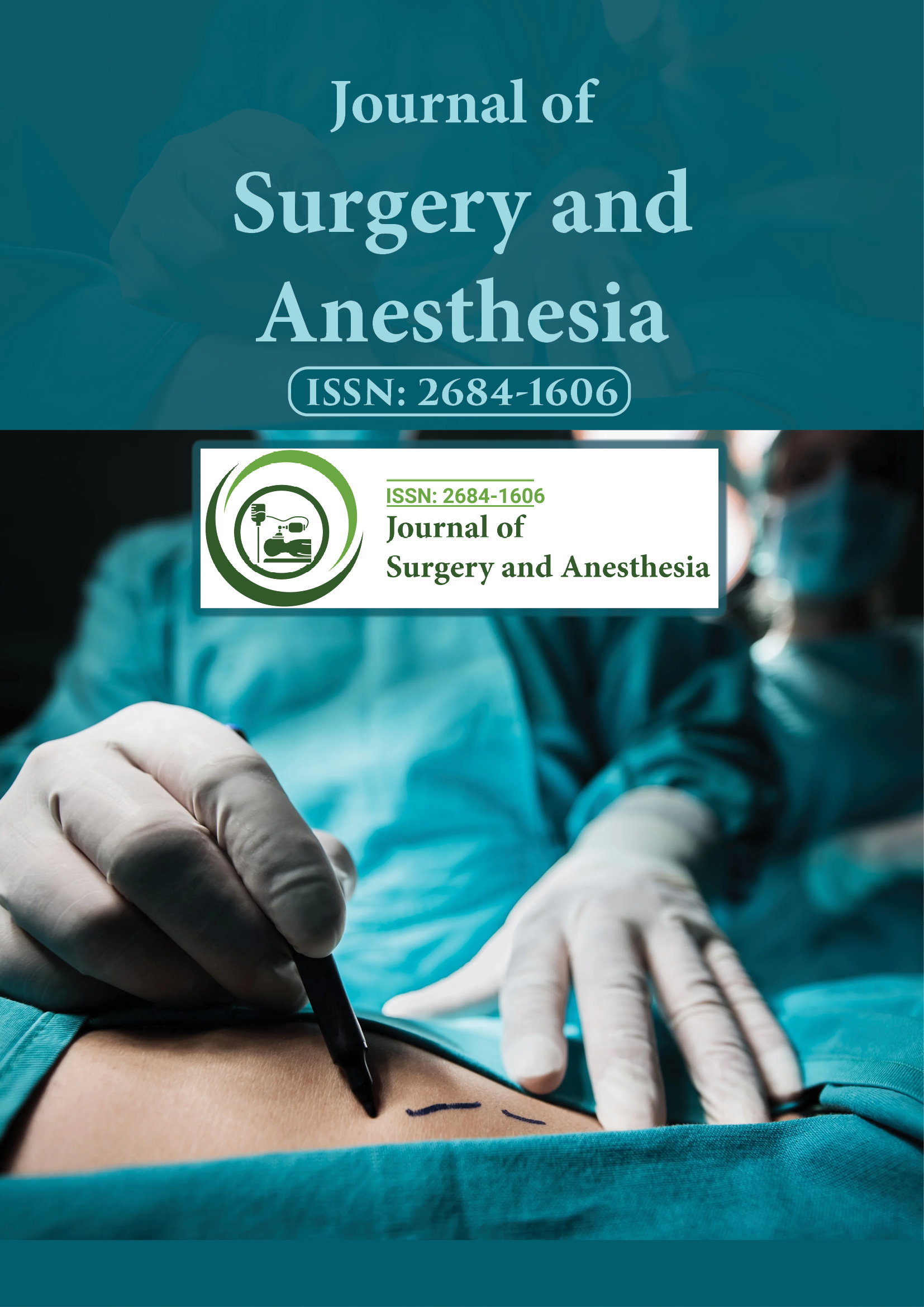Indexed In
- Google Scholar
Useful Links
Share This Page
Journal Flyer

Open Access Journals
- Agri and Aquaculture
- Biochemistry
- Bioinformatics & Systems Biology
- Business & Management
- Chemistry
- Clinical Sciences
- Engineering
- Food & Nutrition
- General Science
- Genetics & Molecular Biology
- Immunology & Microbiology
- Medical Sciences
- Neuroscience & Psychology
- Nursing & Health Care
- Pharmaceutical Sciences
Commentary - (2025) Volume 9, Issue 1
The Role of Laparoscopy in Enhancing Surgical and Anesthetic Safety
Saja Alanazi*Received: 01-Mar-2025, Manuscript No. JSA-25-29044; Editor assigned: 03-Mar-2025, Pre QC No. JSA-25-29044 (PQ); Reviewed: 17-Mar-2025, QC No. JSA-25-29044; Revised: 24-Mar-2025, Manuscript No. JSA-25-29044 (R); Published: 31-Mar-2025, DOI: 10.35248/2684-1606.25.9.276
Description
Laparoscopic surgery, also known as minimally invasive surgery, has revolutionized the field of surgical intervention over the past few decades. By utilizing small incisions, specialized instruments, and a camera known as a laparoscope, this technique allows surgeons to perform complex procedures with enhanced precision, reduced trauma, and significantly faster recovery for patients. It represents a major shift from traditional open surgery, where large incisions and prolonged hospitalization were once the norm.
The hallmark of laparoscopic surgery is its reliance on advanced imaging and instrumentation. Through a small incision, typically less than 1.5 cm, a laparoscope transmits high-definition images of the internal organs onto a monitor, enabling the surgeon to navigate the surgical site with exceptional clarity. Additional small ports are inserted for instruments, which are maneuverer externally by the surgeon. This method has proven particularly effective in abdominal and pelvic surgeries, such as cholecystectomy, appendectomy, hernia repair, bariatric surgery, and gynecological procedures.
One of the most significant benefits of laparoscopic surgery is its impact on postoperative recovery. Compared to open surgery, patients undergoing laparoscopic procedures often experience less postoperative pain, shorter hospital stays, and a faster return to normal activities. These outcomes are largely due to the smaller incisions, which minimize muscle and tissue damage. Additionally, the risk of surgical site infections and other complications is markedly reduced.
From an anesthetic perspective, laparoscopic surgery presents both opportunities and challenges. Anesthesia protocols must be adjusted to account for the pneumoperitoneum – the insufflation of carbon dioxide into the abdominal cavity – which is necessary to create working space for the surgeon. This can affect respiratory mechanics and cardiovascular dynamics, requiring careful monitoring and management. Nonetheless, the overall anesthetic burden is typically lower due to the shorter duration of the procedure and the rapid postoperative recovery.
Laparoscopic surgery also contributes to improved cosmetic outcomes, which is especially important in younger patients and those undergoing elective procedures. The smaller, often barely visible scars result in higher patient satisfaction and self-esteem following surgery. Moreover, with fewer complications and a reduced need for postoperative analgesics, laparoscopic techniques contribute to a more cost-effective healthcare model, even when factoring in the expense of the specialized equipment and training.
Technological advancements continue to expand the horizons of laparoscopic surgery. High-definition imaging, 3D visualization, and robotic-assisted laparoscopic systems are enhancing surgical accuracy and enabling even more intricate procedures to be performed with minimal invasiveness. Robotic systems, in particular, offer improved ergonomics for the surgeon and increased dexterity through articulated instruments that mimic human wrist movement.
Despite its many advantages, laparoscopic surgery is not without limitations. Certain complex cases, such as those involving extensive adhesions or malignancies, may still necessitate open surgery. Additionally, there is a learning curve associated with mastering laparoscopic techniques, underscoring the importance of structured training programs and simulation-based education for surgeons-in-training.
In conclusion, laparoscopic surgery exemplifies the evolution of surgical care in the 21st century. It aligns with the modern priorities of precision, safety, cost-efficiency, and patient-centered outcomes. As technology and expertise continue to develop, the scope of laparoscopic surgery will only broaden, offering less invasive, yet equally effective, treatment options for an increasing range of surgical conditions. For journals focused on surgery and anesthesia, such as the Journal of Surgery and Anesthesia, the continued exploration and dissemination of research in this field remain vital to shaping the future of operative medicine.
Citation: Alanazi S (2025). The Role of Laparoscopy in Enhancing Surgical and Anesthetic Safety. J Surg Anesth. 9:276
Copyright: © 2025 Alanazi S, et al. This is an open-access article distributed under the terms of the Creative Commons Attribution License, which permits unrestricted use, distribution, and reproduction in any medium, provided the original author and source are credited.
